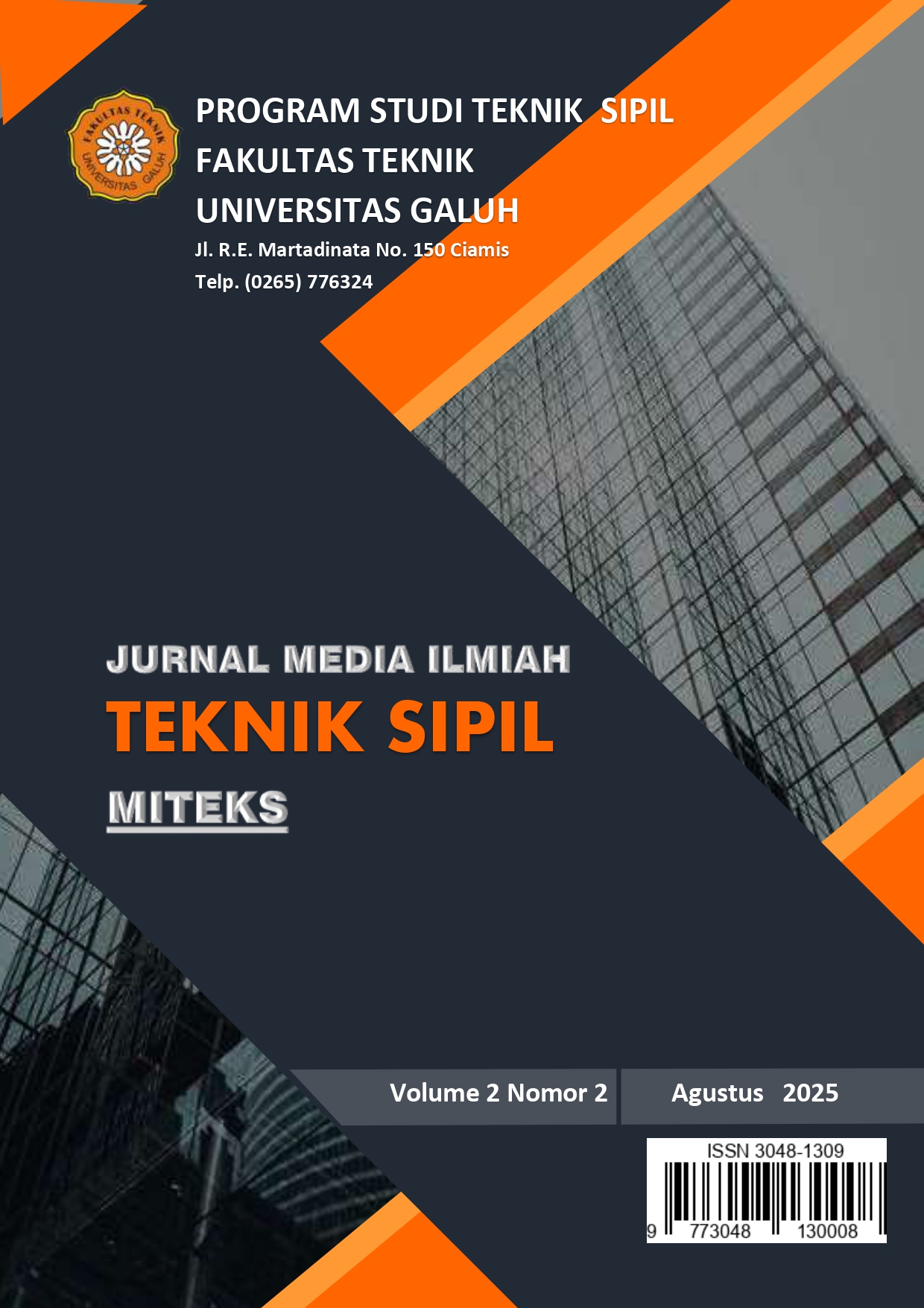ANALISIS TINGKAT KESELAMATAN LALU LINTAS PADA SIMPANG EMPAT TAK BERSINYAL DENGAN METODE TRAFFIC CONFLICT TECNIQUE (TCT)
(Studi Kasus Simpang Cicariang – Kawalu – Tasikmalaya)
DOI:
https://doi.org/10.25157/mediailmiahtekniksipil.v2i2.4313Kata Kunci:
traffic safety, unsignalized four-way intersection, Traffic Conflict Technique (TCT), Time to Accident.Abstrak
This study aims to analyze traffic safety levels at an unsignalized four-way intersection using the Traffic Conflict Technique (TCT) method, with a case study at the Cicariang Intersection, Kawalu, Tasikmalaya. This intersection experiences high traffic density, especially during peak hours, which often leads to conflicts between road users and the potential for traffic accidents.
The TCT method was used to identify traffic conflicts by observing vehicle speed, the distance between vehicles, and Time to Accident (TA). Data were collected through field surveys over two days, during which road geometry, vehicle speed, and conflict classification were observed. The study results showed that most conflicts occurred between motorcycles, with the predominant vehicle behavior being sudden braking.
This study found that the speed of vehicles during conflicts at the Cicariang intersection most often ranged between 20–30 km/h, with 64 conflicts, while the lowest speed was 40–50 km/h with 9 conflicts. Without traffic lights, the risk of accidents increases, as evidenced by a Time to Accident (TA) of only 0.00–0.5 seconds for 124 conflicts. There were 126 serious conflicts and 73 non-serious conflicts, indicating a high level of conflict severity at this intersection. Therefore, it is recommended to improve safety through the addition of traffic control devices.













